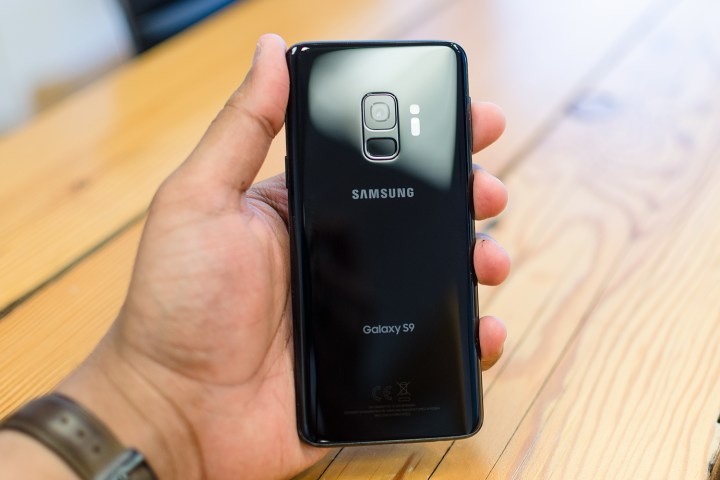The days of securing your phone with just a PIN code or a pattern are long gone, and although the new Samsung Galaxy S9 and S9 Plus both offer those features, they have a selection of other more secure options too. These new security features rely on biometrics — in this case your fingerprint, iris, or facial features. When you first start up the Galaxy S9, you may rush through these options in the excitement of actually using the phone; but they’re important and should be revisited.
Here’s everything you need to know about setting up the security systems on your Galaxy S9 or Galaxy S9 Plus.
Security settings
 |
 |
You’ll need to dig into the Settings menu to find the right options.
- Open Settings, and scroll down the list to find Lock Screen and Security. Tap it.
- You’ll need your PIN code, which you likely put in place when you set up the phone. If not, tap Screen Lock Type and then PIN, and you’ll be prompted to set it up. It’s important not to forget it, so make it memorable. Without a PIN, you won’t be able to set up any of the other security features.
Fingerprints

The most reliable way of unlocking your Galaxy S9 is to use the fingerprint scanner. The sensor is located just below the camera lenses on the back of the phone, in a slightly more sensible place than it was on the Galaxy S8.
- Look for the Fingerprint Scanner option in the Biometrics section under Lock Screen and Security. Tap it and you’ll be prompted to input your PIN. Find the Add Fingerprint option and tap it, then follow the onscreen instructions.
Fingerprint verification can be used for Samsung Pay, and an option for it is found under the same menu.
Intelligent Scan
This is Samsung’s hybrid face and iris unlock system, designed to be more reliable than using just one of these two biometric systems on its own. Even if you enable fingerprint recognition, we still recommend setting this up and giving it a try. We’ve seen varying results, with some people finding it more reliable than others.
It’s not suitable for high-security features like Samsung Pay, and Samsung warns that Intelligent Scan could be fooled by someone who looks like you. It’s less secure than a PIN, pattern, or password. Lighting that’s different than when you set the system up may confuse it, along with glasses, hats, fake noses (probably), and other changes to your face following registration.
Once you’ve read the warnings and advice, you’ll be guided to hold the phone up to your face, in adequate lighting, ready to register your face. This takes a very short amount of time. Next is iris recognition, and if you wear glasses or contact lenses, you should remove them.
With this done, you’ll be prompted to activate Intelligent Scan. Returning to the main menu, we recommend making sure both Intelligent Scan unlock and Screen-on Intelligent Scan are activated.
Screen lock type
 |
 |
 |
There are plenty of security options on the Galaxy S9, so why not use them all?
- Tap Screen lock type, enter your PIN, and select the options you want from the list. If you’ve registered Intelligent Scan, select this and fingerprints for the most versatile unlock system on your phone. Be aware you cannot opt for either face or iris unlock separately if you choose Intelligent Scan.
- If you want to use biometrics for Samsung Pay, you can use either fingerprint recognition or iris scanning. Intelligent scan and face unlock cannot be used.
Using Intelligent Scan and the fingerprint sensor
Using Intelligent Scan may sound as simple as holding your phone up to your face, and it is — but there are a few things to know about using Intelligent Scan effectively. First, you should wake the phone to the lock screen using the sleep/wake key on the side of the phone. Look out for the red LED, which lights up when Intelligent Scan is active. Provided you’re in decent lighting, and aren’t too close to the phone’s screen, it should work on a consistent basis. If it’s not working, go back and re-register your face and iris again. Varying lighting conditions, especially during this stage, really do affect Intelligent Scan’s performance.
The fingerprint sensor is the faster way to wake the phone, as touching the sensor unlocks the device without the extra step of pressing the sleep/wake key. To make it more convenient, register your index finger on both hands, so you don’t have to juggle the phone if you pick it up with the “wrong” hand.
That’s about it for the security settings on the Samsung Galaxy S9, and all the instructions apply to the Galaxy S9 Plus as well. Protecting your phone with one or more of these methods is essential.
Editors' Recommendations
- 5 phones you should buy instead of the Samsung Galaxy S24 Plus
- Samsung has a new (and cheaper) way to buy the Galaxy S23
- Samsung’s newest Android tablet is a perfect iPad alternative
- Have a Samsung Galaxy S23? Don’t update your phone to One UI 6.1
- A new version of the Samsung Galaxy S24 could be coming soon




